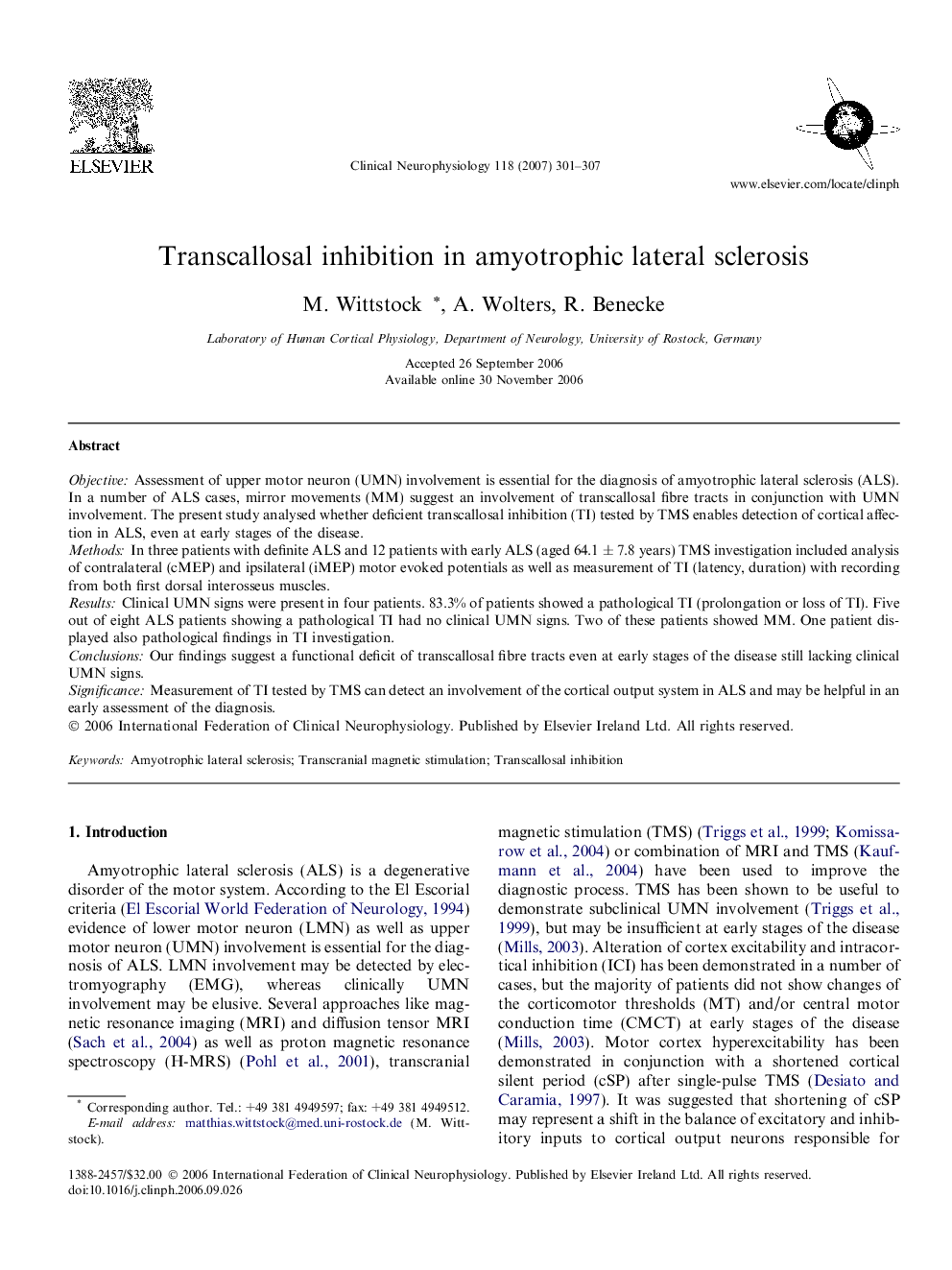| Article ID | Journal | Published Year | Pages | File Type |
|---|---|---|---|---|
| 3048011 | Clinical Neurophysiology | 2007 | 7 Pages |
ObjectiveAssessment of upper motor neuron (UMN) involvement is essential for the diagnosis of amyotrophic lateral sclerosis (ALS). In a number of ALS cases, mirror movements (MM) suggest an involvement of transcallosal fibre tracts in conjunction with UMN involvement. The present study analysed whether deficient transcallosal inhibition (TI) tested by TMS enables detection of cortical affection in ALS, even at early stages of the disease.MethodsIn three patients with definite ALS and 12 patients with early ALS (aged 64.1 ± 7.8 years) TMS investigation included analysis of contralateral (cMEP) and ipsilateral (iMEP) motor evoked potentials as well as measurement of TI (latency, duration) with recording from both first dorsal interosseus muscles.ResultsClinical UMN signs were present in four patients. 83.3% of patients showed a pathological TI (prolongation or loss of TI). Five out of eight ALS patients showing a pathological TI had no clinical UMN signs. Two of these patients showed MM. One patient displayed also pathological findings in TI investigation.ConclusionsOur findings suggest a functional deficit of transcallosal fibre tracts even at early stages of the disease still lacking clinical UMN signs.SignificanceMeasurement of TI tested by TMS can detect an involvement of the cortical output system in ALS and may be helpful in an early assessment of the diagnosis.
